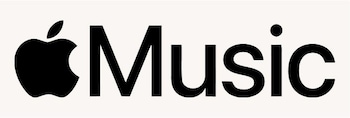It is now possible to access over 120 million songs using nothing but the phone in your pocket. But with a number of companies competing to deliver them, it’s important to find the best music streaming service for you. Each offers something unique, whether that’s lossless audio or quirky music recommendations.
“More than 60 per cent of our customers pay for more than one music streaming service,” explains Michelangelo Guarise, founder of Volumio, which consolidates multiple streaming services into one location. “Many are suffering from a sort of decision paralysis.”
To help you choose, I’ve tried the eight most popular subscriptions and you can read my reviews below, followed by answers to some frequently asked questions. But if you’re in a hurry, here’s a quick look at my top five:
Which are the best music streaming services in 2024? At a glance
- Best overall - Spotify
- Best value - Amazon Music
- Best free service - Deezer
- Best for Apple users - Apple music
- Best for sound quality - Tidal
What is the difference between music streaming services?
“Each is trying to offer something different, despite largely costing the same and having nearly identical monthly subscription models,” Guarise says. “We often see Spotify used as a benchmark. They’re the Netflix of the audio world.”
Spotfiy recently expanded to offer podcasts, such as the popular Joe Rogan Experience, Supernatural and Fantasy Footballers. It also dabbles in audiobooks and even self-learning courses.
The likes of Deezer and Amazon Music Unlimited are rapidly playing catch up, while at the other end of the spectrum, Qobuz, Apple Music and Tidal are all raising the bar by offering a library of content in a sonically unparalleled hi-res lossless format.
Bitrate
Bitrate refers to the amount of data that is processed over time. It’s typically calculated in kbps (kilobytes per second). Streaming services compress data in order to stream it faster. The more the data is compressed, the more detail is lost. The less it is compressed, the better quality is the audio.
Volumio’s Guarise likens hi-res audio to watching 4K or ultra high-definition television. One of the leaders in lossless audio is Tidal. Whereas Spotify streams at a max speed of 320 kbps, Tidal streams at a massive 9,216 kbps. Granted, this will hoover up mobile data, but the resulting audio will have unrivalled clarity.
Recommendation engines
These are the programmes that suggest songs for you based on your previous listening. “They mainly work by assigning each track characteristics such as tone and tempo,” says Guarise. “The algorithm can then suggest other songs with similar characteristics.”
However, Guarise feels that it is also “feeding mediocrity”, where users are continuously suggested the same tracks and artists. Some streaming services, such as Tidal and Qobuz, like to counteract this by featuring playlists curated by musicologists.
Why you can trust Telegraph Recommended
Our thorough, real-world tests will always help you find the best product at the best price. No manufacturer ever sees copy before publication and we do not accept payment in exchange for favourable reviews. Visit our Who We Are page to learn more.
How we chose the best music streaming services
After taking advice from music industry experts Michaelangelo Guarise and Steve Sells, I spent a month listening to each of the UK’s leading subscription services. I was looking for a wide library of tracks, streamed in high-quality audio with well-calibrated recommendations and valuable extra features such as podcasts and audiobooks.
I also took into account value for money, including student discounts, family plans and free-with-ads plans. Here’s what I found, starting with the best…
Best music streaming services
1. Spotify
Usually £11.99 per month
Best overall, 9/10
We like: fantastically deep library and cool AI DJ feature
We don’t like: plans are getting expensive, yet it lacks hi-res audio

- Monthly fee: £11.99 for one Premium account
- Free trial period: three months
- Free with ads option? Yes
- Music library size: Over 100 million tracks
- Maximum bit rate: 320 kbps
- Family plan: £19.99 for up to six Premium or Kids accounts
- Student discount: £5.99 per month
- Podcasts: Yes
- Videos: Yes
- Download for offline listening: Yes
If you discount all of the questionable pirate websites, such as Napster and Audio Galaxy, Spotify was among the very early audio streaming innovators that allowed users to legitimately access a library that included thousands of artists, all of whom were paid per stream – even if the remuneration remains questionable to this day.
Music industry politics aside, you can tell the platform has been around the block, as its maturity is manifested in the seamless user experience and sheer depth of what it now offers.
The suggestion algorithm goes beyond many rivals, with An AI-powered DJ that plays songs it thinks you will like, as well as favourites from your previous listening patterns, as well as carefully curated mixes based on the various genres you have ingested over the years.
However, it also now offers a deep library of audiobooks and a wide array of podcasts, some of which are now bespoke to the platform (Joe Rogan fans will know this). More recently, Spotify added ‘Courses’ for Premium account holders that help them improve everything from their public speaking to techno music-making abilities.
If you throw in music videos and sing-along lyrics, Spotify is arguably one of the most accomplished and feature-rich audio streaming services out there, let alone a mere conduit for listening to digital music.
But as a result, Premium accounts are now rather pricey and the platform has long been lambasted for not offering music at lossless quality, especially given the monthly cost of membership.
In addition to this, there has been speculation that the platform is being infiltrated by AI-generated music from faceless and nameless artists. There have also been reports of artists exploiting the payment process by creating hundreds of pseudonyms that allow them to bank profits from various accounts.
Despite its misgivings, it’s difficult to argue against Spotify’s ease of use. It seamlessly jumps from desktop to mobile, plays nice with both Android and Apple devices, comes natively on most modern vehicle infotainment systems and offers a perfectly acceptable 320 kbps audio quality.
With rumours that Spotify’s hi-res audio tier is coming soon, it could offer the complete package, so long as monthly premiums don’t jump up once again.
2. Apple Music
Usually £10.99 per month
Best for Apple users, 8/10
We like: great audio quality and the ability to integrate own music library
We don’t like: it is rubbish for Android users and highest quality audio requires extra peripherals

- Monthly fee: £10.99
- Free trial period: New subscribers on iPhone, iPad or Mac get three months free
- Free with ads option? No
- Music library size: Over 100 million tracks
- Maximum bit rate: Up to 9,216 kbps 24-bit/192 kHz (may require digital-to-analog converter DAC)
- Family plan: £16.99 a month for up to six accounts
- Student discount: £5.99 per month
- Podcasts: Yes
- Videos: Yes
- Download for offline listening: Yes
MacBook and iPhone users are already likely very well acquainted with Apple Music. After all, the Cupertino company likes to dangle a three-month free trial in the face of anyone who has recently made an Apple purchase.
Aside from simply being an app that resides on the sleek piece of tech that lives in your hand, it’s up there with the best music streaming services for a number of good reasons, including its vast 100 million track library that is catalogued in lossless audio, preserving the nuances of the original recording and generally lending a much deeper, richer listening experience.
In addition to this, Apple also offers its Spatial Audio with Dolby Atmos, which essentially delivers deeply immersive surround sound where speakers or headphones allow. As you’ve probably guessed, this includes its own AirPod Pro, AirPod Max and a handful of Apple-owned Beats headphones products.
On the subject of peripherals, subscribers undoubtedly get an excellent sounding file when paired with the correct kit, but those wanting to really push the limits of true Hi-Res Lossless on their Apple phones will have to use a digital-to-analog converter – or DAC – and a pair of quality headphones or speakers, as iPhones only support files up to 24-bit/48kHz. As you can imagine, extra peripherals can be costly.
The user experience will be a key driver for those thinking of parting with the monthly subscription required for Apple Music, as its library of audio content is about as deep as most rivals.
But its ability to effortlessly jump from Apple Watch to smartphone to Apple CarPlay is arguably unrivalled and those deeply embedded in the ecosystem will likely find its extensive catalogues the easiest to navigate.
3. Apple Music Classical
Usually £10.99 per month
Best for classical, 7/10
We like: high quality audio and easy search functionality
We don’t like: no offline listening, requires an Apple Music Subscription

- Monthly fee: £10.99
- Free trial period: New subscribers on iPhone, iPad or Mac get three months free
- Free with ads option? No
- Music library size: Over 5 million tracks
- Maximum bit rate: Up to 9,216 kbps 24-bit/192 kHz (may require digital-to-analog converter DAC)
- Family plan: £16.99 a month for up to six accounts
- Student discount: £5.99 per month
- Podcasts: No
- Videos: No
- Download for offline listening: No
Apple Music Classical was essentially born out of frustration with numerous user interfaces, seeing as the genre can be so complex, time-consuming and tricky to navigate.
So much so that even technology giant Apple saw the need to separate Classical out as an individual streaming app, which comes free if you already have an Apple Music subscription (see above).
The USP here is the ability to search by work, conductor or composer, as well as rifle through specific opus numbers or keys. In fact, it is even possible to browse the vast array of 5 million tracks by instrument, rather than artist.
Like Apple Music, the app (be it on mobile or desktop) looks fantastic and includes composer portraits or artworks where possible. Plus, like Apple Music, tracks are offered in the highest quality available, which is up to 192kHz/24-bit hi-res lossless, as well as thousands of tracks in Apple’s Dolby Atmos-powered Spatial Audio.
For passionate classical music fans, this really is the best audio streaming option out there, with a catalogue that is curated by classical music experts. Sure, there’s AI at play in the recommendation algorithm, but it is supported by carefully curated content from real people.
Perhaps its biggest downfall is the lack of offline listening (at time of writing), with Apple not allowing tracks to be downloaded and played back when out of data or in areas without a Wi-Fi connection.
4. Amazon Music Unlimited
Usually £10.99 per month
Best value for lossless audio X/10
We like: simple user interface, hi-res and spatial audio format
We don’t like: recommendation engine isn’t as good as rivals, user interface isn’t exceptional

- Monthly fee: £10.99
- Free trial period: Four months free for Amazon Prime members, three months for non-members
- Free with ads option? Yes
- Music library size: Over 100 million tracks
- Maximum bit rate: Up to 9,216 kbps FLAC 24-bit/192 kHz
- Family plan: £17.99 a month for up to six accounts
- Student discount: £5.99 per month
- Podcasts: Yes
- Videos: No
- Download for offline listening: Yes
Amazon Prime members have likely been offered the brand’s music streaming service, as it is keen on making more customers aware of its great value lossless audio catalogue.
Over 100 million tracks are available at an Apple Music, Tidal and Qobuz-rivalling hi-res FLAC 24-bit/192kHz bitrate, even if the user interface and recommendation engines aren’t as slick as those key rivals.
Amazon’s subscription packages are also very confusing, as it offers a completely free tier to non-members, but that only lasts for four months. Amazon Prime members can gain access to Amazon Music, but it has limited playback options, blocks access to the highest quality audio and doesn’t allow podcasts on Amazon Fire TV or full access to music catalogues on Fire tablets.
For the best service, Prime Members are encouraged to step up to Amazon Music Unlimited, which unlocks access to personalised stations, spatial audio and the highest bitrate playback options.
There is also a comprehensive list of ad-free podcasts, with the option to download to device and play when out of mobile or Wi-Fi signal.
Naturally, Amazon Music Unlimited also works well with Alexa and other Amazon devices, so could be a good choice for those invested in AI assistant-powered smart speakers.
5. YouTube Music
Usually £10.99 per month
Best for live music, 7/10
We like: user interface is better than YouTube video, array of curated mixes and access to obscure artists
We don’t like: lower bitrates, user interface is clunky at times

- Monthly fee: £10.99
- Free trial period: 1 month, but only for students
- Free with ads option? Yes
- Music library size: Over 100 million tracks
- Maximum bit rate: Up to 256 kbps
- Family plan: £16.99 a month for up to five accounts
- Student discount: £5.49 per month
- Podcasts: Yes
- Videos: Yes
- Download for offline listening: Yes
Many YouTube aficionados have been using the popular online video hub as a virtual jukebox for some time, as the even the browser experience makes it fairly simple to locate and play songs, artists, live recordings and even carefully curated playlists, most of which have been cobbled together by users.
But YouTube cottoned on to this a long time ago and, aside from stuffing the service with irritating and interrupting adverts, it also requires a tab be left open in a browser or the app be active for playback to continue. Once that display goes dark, so do the tunes.
To get the full experience, including the ability to download tracks for offline listening, make the most of the app on vehicle infotainment systems and generally get the best experience, you’ll have to sign up to a monthly subscription.
Audio quality is good enough, even though it lags behind rivals, including Spotify, but additional features are impressive. There’s a ‘Sing to Search’ function, which allows you to hum or sing a tune to identify it. Like Spotify, there’s an AI-generated radio station that’s based on your listening habits, as well as the ability to search for and subscribe to podcasts.
Access to YouTube Music is included in a YouTube Premium account, so it makes sense from a budget perspective if you also want to make the most of ad-free video-bingeing and YouTube’s long form premium content.
Plus, because it is attached to YouTube, the music service also includes rare remixes, live sessions, cover versions and a whole host of other interesting and often niche content that has been uploaded to the site.
Particularly good for live music fans, hungry for epic DJ sets and festival highlights, it’s a neat touch but can also be the undoing of the user interface. Search for one of today’s big hits and you’ll often get served remixes and amateur versions instead.
6. Tidal
Usually £10.99
Best for audio quality, 9/10
We like: exceptional sound quality, looks slick, plugs into third party DJ software
We don’t like: podcast offering is limited, can’t add local music files

- Monthly fee: £10.99
- Free trial period: 1 month
- Free with ads option? No
- Music library size: Over 110 million tracks
- Maximum bit rate: Up to 9,216 kbps FLAC 24-bit, 192 kHz
- Family plan: £16.99 a month for up to six accounts
- Student discount: £5.49 per month
- Podcasts: Yes
- Videos: Yes
- Download for offline listening: Yes
“Tidal is the service I turn to when testing new equipment,” explains Steve Sells, Technical Director of electronics at Naim Audio. “Listen to a song on Spotify and then listen again on Tidal and the difference in clarity and quality will blow you away,” he adds.
Well, if it’s good enough for a high-end audio equipment maker, it is probably good enough for the general public, but Tidal really was among the first to create an audio streaming service that was designed for audiophiles and industry professionals alike.
When played through the right equipment (think expensive Hi-Fi and the best wired headphones), tracks on Tidal sound exceptional, with a bitrate of up to 9,216 kbps making your favourite songs and artists sound clearer and more expansive.
It is also one of the few services that allows DJs (either bedroom or professional) to stream hi-res content during live sets, thanks to a DJ Extension that costs an extra £9 per month but plugs into an array of popular third-party mixing software.
The back-catalogue includes over 110 million songs but Tidal has more recently added a selection of carefully curated podcasts. It’s not as expansive as rival streaming services, but feels more geared towards those who like music and the industry around it in general.
Although there isn’t as much variety of recommended music as there is on Spotify, which creates neat Day Lists and mix tapes based on listening patterns, the recommendation engine is pretty good.
Plus, its Tidal Rising feature is fantastic for surfacing new and exciting artists from a plethora of different genres. Spotifty is often accused of rehashing the same tracks and generally doing a poor job when it comes to new artist discovery, but Tidal feels like it genuinely wants you to expand your sonic horizons.
7. Qobuz
Usually £10.83 per month
Best for audiophiles, 8/10
We like: excellent curation by musicologists, high resolution files
We don’t like: lacks the social factor and any other flashy features

- Monthly fee: £10.83
- Free trial period: 1 month
- Free with ads option? No
- Music library size: Over 100 million tracks
- Maximum bit rate: Up to 9,216 kbps FLAC 24-Bit up to 192 kHz
- Family plan: £21.90 a month for up to five accounts
- Student discount? No
- Podcasts: No
- Videos: No
- Download for offline listening: Yes
Qobuz deserves recognition for its unwavering commitment to delivering the best quality digital audio, allowing users to browse and purchase from an extensive catalogue of music that meets the Hi-Res Audio standard.
The humble CD arguably set the bar for audio quality in the 1980s, but Qobuz offers its entire 100 million back catalogue in 24-Bit up to 192 kHz, compared to the 16-bit, 44.1 kHz of a Compact Disc.
It is all easily browsed and discovered via a sleek user interface – complete with bespoke apps for browser, Mac, iOS and Android, as well as Android Automotive and Apple CarPlay.
Seeing as its focus is on quality, it plays nicely with Roon software, which in turn acts as both software and a server to deliver hi-res audio to numerous high-end audio devices. Similarly, you’ll find integration with Bowers & Wilkins and Bang & Olufsen hi-fi products.
There is no fee to browse the catalogue and purchase, if ownership is more your thing, but the ability to stream starts at £10.83 a month and rises to £14.99 a month for a ‘Sublime’ tier, which offers up to 60 per cent off hi-res purchases.
Although the UI is slick and intuitive, it’s most definitely one for the audio enthusiasts, rather than the hip kids wanting to share their most listened-to tracks to every conceivable social media network.
There’s nothing in the way of podcasts or audio books, nor is there an AI-powered DJ serving up tracks, but it does offer a fantastic selection of interactive magazine articles, interviews and editorial content, which even includes reviews of the latest Hi-Fi equipment.
It is all curated by real audiophiles and musicologists, keen to highlight and surface new and interesting music the old fashioned way: through expert opinion and sharp editorial, rather than computer software.
8. Deezer
Usually £11.99 per month
Best free service, 7/10
We like: massive musical library, good quality audio files, Shazam-like SongCatcher
We don’t like: recommendation engine isn’t the best, sparse interface

- Monthly fee: £11.99
- Free trial period: 1 month
- Free with ads option? Yes
- Music library size: Over 120 million tracks
- Maximum bit rate: 1,411 kbps
- Family plan: £19.99 a month for up to six accounts
- Student discount: £5.99 per month
- Podcasts: Yes
- Videos: No
- Download for offline listening: Yes
Still going strong since its launch in 2007, the French music streaming service can count itself among the originators and innovators in the scene and the service it continues to offer today remains a great alternative to Spotify and the like, if not exactly cheaper or more generous in what it offers.
There is no denying that its catalogue of some 120 million tracks is expansive, while the 1,411 kbps maximum bitrate far exceeds some of its streaming rivals, putting it on par with Tidal’s HiFi subscription tier and Apple’s Lossless Audio Codec (ALAC).
The interface is very easy to navigate and simple to search, with the desktop experience bordering on the sparse. It’s a little more colourful and engaging on the smartphone app, but still nowhere near as flashy or visually-pleasing as Spotify.
This is chiefly down to the lack of social presence, as well as a relatively basic recommendation engine in Flow, which allows you to listen to favourite artists, as well as discover new ones.
There’s no AI-powered radio host, quirkily-named playlists or recommendations for fresh audio books and courses to expand learning, as Deezer chiefly sticks to the music.
However, there is the option to use it as a podcast catcher or online radio tuner, as well as some fun interactive quizzes, local gig listings and Deezer Originals, which are essentially curated playlists and exclusive live sessions.
It is possible to sign up and listen for free, but you will have to put up with adverts, you can’t skip tracks or save files for offline listening.
Plus, the Premium tier introduces Lyrics and a cool SongCatcher feature that acts just like Shazam and names tracks by listening to and analysing snippets of music when out in the wild.
FAQs
Which music streaming service has the best audio quality?
Both Qobuz and Tidal were once the only two streaming services to offer true hi-res audio, with the FLAC codec delivering 24-Bit, up to 192 kHz. However, alongside its Apple Lossless Audio Codec (ALAC) codec, Apple Music has encoded its entire music catalogue in Hi-Res Lossless, up to 24-bit, 192 kHz. Due to the slight variations in software, there will be some difference in the playback quality between the three services, but these will be negligible.
What music streaming service is the best for android?
Spotify remains the most popular choice for Android users, but YouTube Music, Deezer, Amazon Music, Qobuz and Tidal all work seamlessly across Android devices.
What music streaming service is the best for Apple?
Apple Music and Apple Music Classic are, without question, the best music streaming services to use if you are deeply embedded in the Apple ecosystem, as they work seamlessly across all Apple devices.
What music streaming service is the best for classical music?
Apple Music Classical is really the only audio streaming service that understands the need for a bespoke user interface and the ability to browse the classical music back catalogue by composer, conductor and even instrument type.
Is Amazon Music free with Prime?
Amazon Music is free with Prime memberships, but there are limitations on the service that Amazon offers. If you want the ability to search for and play music on demand, skip tracks and listen to the best quality files, it will require an additional Amazon Music Unlimited subscription.
Is the Spotify family plan a good deal?
The Spotify Family Plan is more expensive than many of its rivals, but it allows for up to six Premium or Kids accounts to be set up under one easy payment. The ability to separate off children’s accounts is handy for those who don’t want their recommendation algorithm disrupted by searches for nursery rhymes, pop songs or kiddy-specific content.
Is SiriusXM available in the UK?
Unfortunately the digital radio and music streaming service is not available outside of the USA, Canada, Columbia and Puerto Rico. That’s why we haven’t included a dedicated review, as it’s not even possible to stream or download a free tier at time of writing.
Disclaimer: The copyright of this article belongs to the original author. Reposting this article is solely for the purpose of information dissemination and does not constitute any investment advice. If there is any infringement, please contact us immediately. We will make corrections or deletions as necessary. Thank you.



